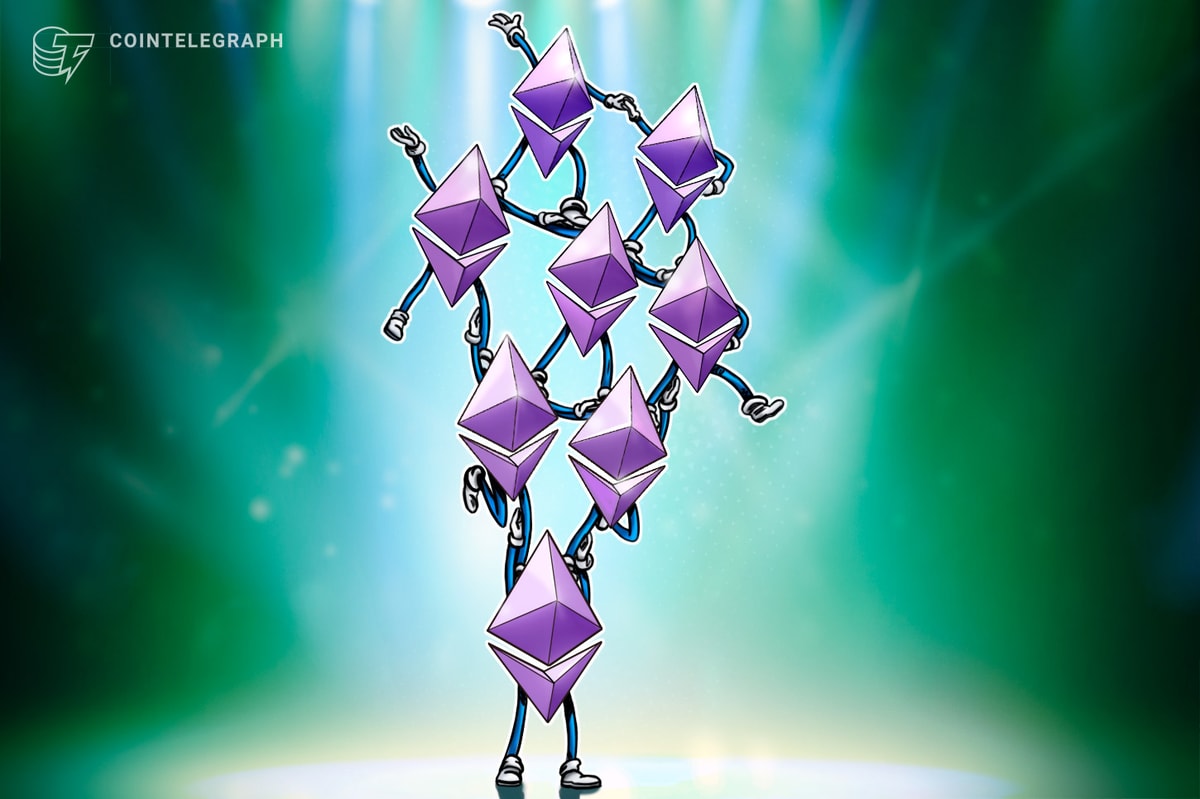The Ethereum network has long been criticized for high transaction fees, which often exceed $4. However, the exponential growth of layer-2 blockchains has created a sustainable solution for decentralized applications (DApps) that require higher scalability. This ecosystem saw a 70% increase in volumes over the past 30 days, but can it match Solana’s success?
Decentralized exchanges 30-day volumes, market share. Source: DefiLlama
While Solana may have surpassed Ethereum’s base layer activity, it still falls short when considering Ethereum’s layer-2 blockchains. Solana captured 35.4% of the decentralized exchange (DEX) volumes in November, up from 27.2% in October, according to DefiLlama data. In comparison, Ethereum and its layer-2 ecosystem accounted for 45.2% of the market share in November, down from 50.1% in October.
In terms of deposits, Ethereum’s base layer has a clear advantage with $69.7 billion in total value locked (TVL), compared to Solana’s $9.2 billion. More notably, some of Ethereum’s layer-2 solutions, such as Base and Arbitrum, are already each at $3 billion in TVL. In total, the Ethereum layer-2 ecosystem has reached a TVL of $11.4 billion, according to DefiLlama data.
Blockchains ranked by total value locked, USD. Source: TradingView
There is no doubt that Solana has emerged as a major player, securing the second position in terms of deposits. However, Ethereum’s dominance remains unchallenged. Additionally, the impressive growth of Base, an Ethereum layer-2 solution founded and controlled by the Coinbase exchange, offers promising prospects, particularly in the memecoin sector.
Memecoins have been a key catalyst for Solana’s adoption and growth, with several tokens surpassing $1 billion in market capitalization. Pump.fun has significantly altered the creation of liquidity pools for new token launches, leading to a substantial increase in trading activity on platforms like Raydium and Orca, which collectively amassed $24.6 billion in volumes over the past seven days.
Solana surpasses Ethereum in fees
Some analysts argue that volumes and total value locked (TVL) are merely means to an end. They emphasize that capturing fees is crucial for a network’s survival, as stakers must be rewarded for their validation services, thereby creating incentives for long-term holding. The primary value driver for cryptocurrencies on smart contract blockchains is the payment for processing services, which supports their decentralization.
Blockchains and DApps 30-day fee, USD. Source: DefiLlama
Solana recently surpassed Ethereum to become the highest-grossing blockchain in terms of fees, prompting investors to question whether (ETH) is overvalued at a $436 billion market capitalization, while (SOL) stands at $116 billion—a 73% discount. However, this simplistic analysis overlooks Solana’s higher inflation rate, currently at 5.3%.
Looking ahead to 2025, Ethereum is considering further fee structure adjustments, including dynamic fee changes based on network usage and potential optimizations in how layer-2 solutions like rollups interact with the base layer. These measures aim to improve the efficiency of decentralized applications (DApps), reduce transaction costs, and ultimately drive higher network fees.
Related: Solana price recovers from sharp sell-off, is $300 SOL possible?
Currently, Ethereum’s layer-2 solutions struggle to compete with Solana, which offers a more seamless experience for new entrants and token launches. However, Base is gradually gaining traction, benefiting from the Coinbase exchange’s continued influence on newcomers to the space.
For now, it appears Solana’s growth will not be hindered, paving the way for higher total value locked (TVL) and volumes, which in turn should positively impact SOL’s price momentum.
This article is for general information purposes and is not intended to be and should not be taken as legal or investment advice. The views, thoughts, and opinions expressed here are the author’s alone and do not necessarily reflect or represent the views and opinions of Cointelegraph.

Leave a Reply